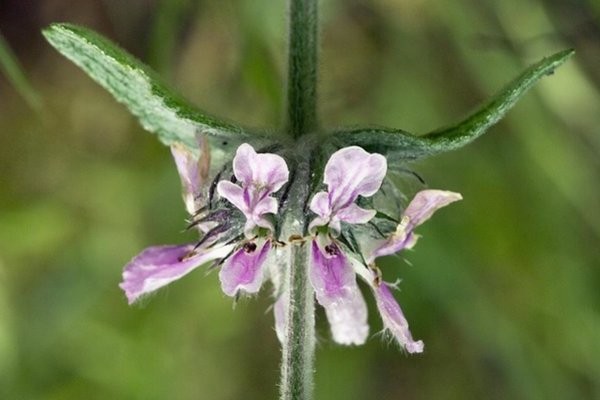Crosne
(Stachys aegyptiaca)

Description
Stachys affinis, commonly called crosne, Chinese artichoke, Japanese artichoke, knotroot, or artichoke betony, is a perennial herbaceous plant of the family Lamiaceae, originating from China. Its rhizome is a root vegetable that can be eaten raw, pickled, dried or cooked. S. affinis is a perennial herbaceous plant with red to purple flowers and reaches a height of 30–120 cm (12–47 in). The green leaves are opposite arranged on the stem. The rough, nettle-like leaves can be ovate-cordate shaped with a width of 2.5–9.5 cm (0.98–3.74 in) or ovate-oblong with a width of 1.5–3.5 cm (0.59–1.38 in). The leaves are separated into a leaf blade and a petiole. The petiole has a length of 1–2 cm (0.39–0.79 in) and becomes shorter towards the stem apex. Similar to the potato, S. affinis grows rhizomes which are approximately 8 cm (3.1 in) long and 2 cm (0.79 in) thick. By medullary primary growth they thicken primarily on the internodes and less on the nodes. This way at irregular intervals constricted tubers are formed, which are usually thinner on both ends. The tubers are coby covered with a thin, pale-beige-to-ivory skin. The flesh underneath is white and tender. Vacuoles in the tuber of S. affinis are rich in stachyose. Stachyose is a tetrasaccharide, consist out of galactose, glucose and fructose. Stachyose is up to 80-90% in dry tubers. S. affinis originates from central and northern China. It had been cultivated in China by the 13th century. Before S. affinis was introduced to Europe, a related crop named S. palustris was collected in nature to be consumed as a vegetable. Later on the Germanic peoples used S. recta, which is a further relative of S. affinis, as medicinal plant. The plant was then cultivated from the 18th century onwards. In 1882 the crop was cultivated on a farm for the first time in Crosne. S. affinis is the only labiate which is cultivated as vegetable in Europe. At the beginning of the 20th century S. affinis became more and more popular until it was abandoned again in the 1970s due to problems with viruses and the plants strong vagility. Since 1990 there has been a rise in the cultivation of S. affinis again and it is available in some markets and in some grocery shops. Today the plant is listed in the "Handbook of Alien Species in Europe" as an invasive plant in Europe.
Taxonomic tree:







